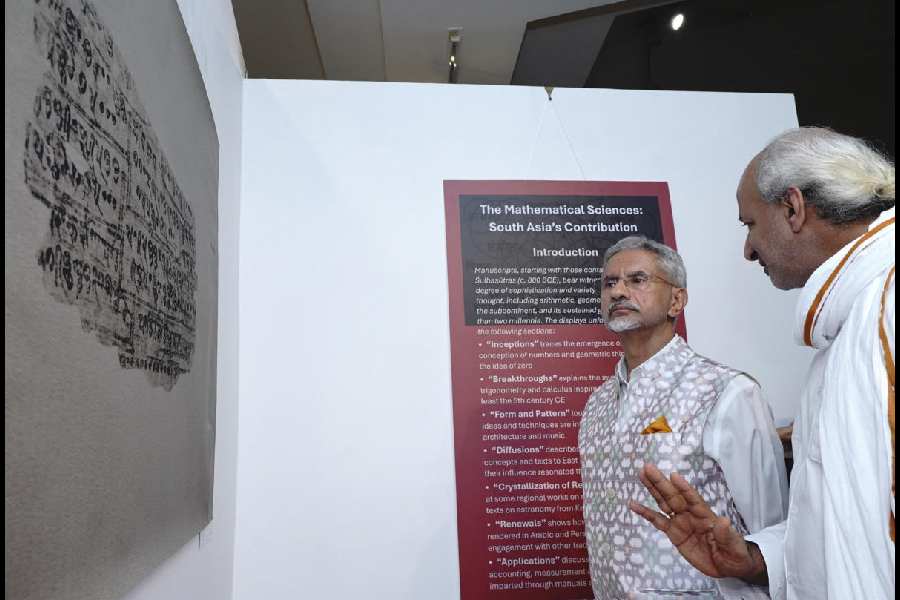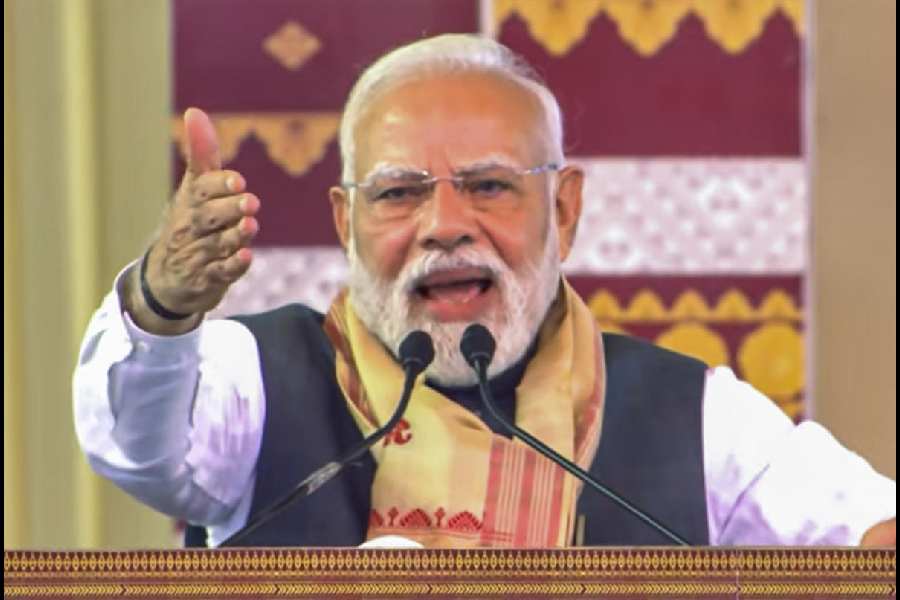 |
| A painting by Reshmi Bagchi Sarkar on display at a CIMA exhibition |
Daring and devilry become the young. But for years the young artists of Bengal had largely hesitated to act their age, settling into the middle age routine of playing it safe. Which meant tuning in to mart moods. However, from the 1990s, liberalisation seemed to invade art, too, slackening and even snapping the umbilical pull of safe anchors ? that is, saleable phrases borrowed from seniors or other sources. Indeed, the volatile convulsions Indian society is passing through has made experimentation and risk-taking alluring, even obligatory as much in creative language as in lifestyle.
CIMA’s current show of the works of four young artists, who had passed out of Santiniketan, offers viewers a glimpse into the kind of new initiative surfacing in Bengali art. It is on till May 20.
You may first notice Shreyashi Chatterjee because she uses an unusual medium, fabric, giving the everyday object of daily chores an iconic entity. Interestingly, fabric allows her to merge her particular and general identities, the feminine and the social with the human.
The softness and pliability of cloth profile the feminine element along with the social role of the woman, while its weave suggests the weft and woof of life. Intricate stitches and embellishments on cloth are like add-ons gifted by experience the way wrinkles are. The artist sculpts the cloth playfully with cuts and creases, folds and fan pleats, embroidery and appliqu? in an unapologetic celebration of the domestic which reminds us that the home is where the essence of social cohesion resides and it is what the woman presides over.
She also shows a few drawings that, in depicting the mesh of scrubbers or the palpably tired yarn of threadbare weave, echo the philosophical meditation of the fabric works.
The experimentation in media, if not in imagery, continues with Reshmi Bagchi Sarkar and Kingshuk Sarkar who spent some time in Japan, which resulted in a technique using stone pigment and animal glue on cotton. It imparts an intermittent glint to the surface much like mica winking in light. However, the medium doesn’t appear to be intrinsic to their art the way Chatterjee’s does.
Reshmi is concerned with women and nature. Imbued with earthy durability, the woman is as much a representative of the life force as nature is. And though the woman seeks renewal in nature ? in a work, for example, she dips her toes in a rivulet ? she often tends to dominate a landscape dwarfed by her presence.
Kingshuk, on the other hand, is urban in temperament. He often divides the surface into rectangles, inserting capricious images in them picked, it seems, quite at random. The way visual stimuli graze our eyes in passing, leaving in the mind a residue of unlinked excerpts, which, nevertheless, knit the tangle of the daily experience.
Sumitro Basak’s earlier proclamations of youthfulness have evolved into a quieter style that’s poised between figuration and abstraction.
For it’s with irregular and overlapping colour zones arranged in apparent disarray that he composes flat, cutout figures perhaps inspired by Matisse. Featureless colour umbrae though these are, there are yet internal dynamics that set them in motion. His agile Hanuman brings to mind shadow play like Orissa’s Ravana Chhaya.










